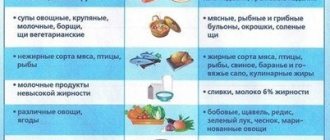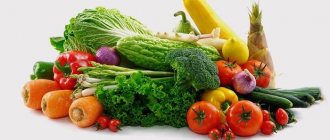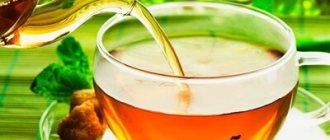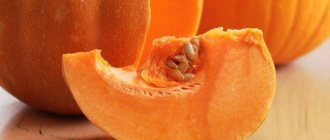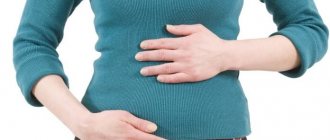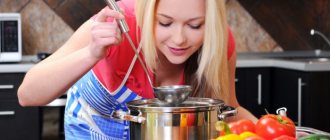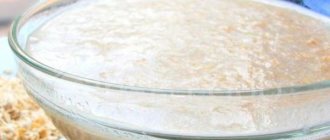What is diet No. 5p intended for?
Medical nutrition is often used for pathologies of the liver, pancreas, intestines, stomach and bile-forming organs. The food system here requires the consumption of certain foods that are prepared in a certain way. An important role is played by the frequency of meals and the temperature of the food consumed.
Diet No. 5p (weekly menu for pancreatitis) was developed in 1920 by general practitioner M.I. Pevzner and has not lost its relevance at present. It is prescribed for exacerbation of pancreatitis. It can not only provide the patient with adequate nutrition, but also normalize the functions of the pancreas. Positively affects bile secretion and liver. Promotes the accumulation of glycogen, relieves cholesterol and fat metabolism. Stabilizes the functioning of the gastrointestinal system.
Diet features
First of all, you need to know that a diet for pancreatitis is mandatory for undergoing a course of therapy. Only with proper nutrition can you achieve results. Otherwise, eating unhealthy foods will completely negate the positive effects of medications or folk remedies. Diets may be different, but today one of the most popular is diet number 5.
The 5p diet is a very good way to get rid of pancreatic pathology. It is one of the varieties of diet No. 5, which is prescribed for treatment. This method is effective in treating both acute and chronic forms of pancreatitis. Also, during remission of the disease, you need to maintain your diet in order to completely get rid of the symptoms of inflammatory processes in the digestive system.
Table number 5 for pancreatitis helps restore normal metabolism in the human body, and also has a beneficial effect on enzymatic organs - it reduces the load on the liver and pancreas and excitability. Thus, fermentation occurs more steadily, without increasing the amount of aggressive substances in the gastrointestinal tract, which are needed for the breakdown of proteins, fats, carbohydrates, minerals, vitamins and amino acids.
The peculiarity of this diet is that foods should be chosen with the highest protein content.
It is advisable to reduce fats to a reasonable minimum, since they take longer to digest than other types of organic substances. For pancreatitis, the 5p diet involves excluding only the most harmful foods that can cause irritation of the pancreas and liver. Otherwise, you can use almost any food - the main thing is to adhere to restrictions when consuming it. With proper preparation and limiting the amount of food that enters the gastrointestinal tract, there will be no harm to the body.
Preference should be given to products that are rich in vitamins, minerals, and lipotropic substances. They will promote the healing of damaged tissue in the digestive system, the resumption of their stable functioning, reducing the load.
The essence of diet number 5 is that you need to completely eliminate harmful foods. Then the patient must follow fractional meals in small portions - the frequency of food consumption per day increases, and the quantity decreases. Also, you should not have snacks between basic meals during the day, as this can affect the load on the enzymatic organs.
Features of preparing dishes at table No. 5p
Dishes in diet No. 5p should have a high content of pectin, liquid, lipotropic components and dietary fiber. During the treatment period, a split meal regimen is introduced, patients take food 5-6 times a day. Products are steamed, baked or boiled. When preparing dishes, vegetables are not sautéed. Products rich in fiber are pureed, the rest are finely chopped.
The diet limits the consumption of fats and carbohydrates. The main diet consists of protein products. Dishes with oxalic acid, containing a lot of cholesterol, coarse fiber and containing purines are excluded from the menu. Remove foods that contain a lot of essential oils and fried foods. Salt should be consumed no more than 10 g per day, and water - up to two liters.
Food should be taken warm. Cold and hot foods are contraindicated.
Diet 5p part two
For pancreatitis, table No. 1 is indicated if there is an acute form of the disease and a sharp exacerbation of chronic pancreatitis. Thanks to table 5 according to Pevzner, the gland is maximally accelerated and pain is eliminated.
Diet 5 for pancreatitis is gentle and is prescribed after a hunger strike for 3 days. But since such a table does not meet the physiological standards for food consumption and the patient’s needs, it is prescribed on the 5th day.
In chronic pancreatitis, the content of the 5th table includes low-calorie consumption with the presence of proteins, fats and carbohydrates.
With this disease, an adult's diet involves multiple consumption of food - up to 8 times and the proportions necessary for health - 100-300 grams.
As a result of the fact that liquid and carbohydrate dishes have a slight stimulant of pancreatic and gastric secretion, after a hunger strike, the table is replenished with carbohydrate products.
diet foods 5
- Slimy soups, the basis of which can be various cereals and vegetable decoctions.
- Ground liquid porridges cooked in water.
- Light tea with sugar.
- Mousse, jelly, jelly made from fruit juice and xylitol.
- Vegetable puree without oil.
- Steamed vegetable puddings.
- Compote with dried fruits.
- Rusks, white stale bread.
- Cracker.
After 2 days after the end of the carbohydrate diet 5 for chronic pancreatitis, it is allowed to introduce protein foods.
allowed on the 5 p diet
- Prepare creamy soups, the basis of which can be boiled meat.
- Egg as a steam omelet, soft-boiled, egg white omelet.
- Steamed meatballs, beef, chicken, fish dumplings.
- Curd puddings.
- Butter used in ready-made dishes.
When the pain has decreased, the acute symptoms associated with pancreatitis have been relieved, and treatment at table 5 has given positive results, the diet is gradually expanded, prescribing nutritional therapy No. 2, which is indicated after an exacerbation and mild manifestation of a chronic disease.
To understand what the fifth table includes, what is possible and what is not, the doctor will advise you on an individual basis after the examination.
Subsequent therapy with table 5 for pancreatitis is recommended for a long period of time - up to a year. The diet will prevent attacks of pathology in the future.
food processing
Table number 5 also implies thermal, mechanical and chemical principles of preparation, which help reduce digestive stimulation of the affected organ.
The energy level is low. The amount of proteins, vitamins and lipotropic substances is slightly higher than that of therapeutic dietary nutrition No. 1. For pancreatitis, limited-volume meals should have:
- carbohydrates;
- fat;
- heavy cellulose;
- salt;
- essential oils.
Dishes are prepared by steaming or boiling. Initially, use ground products, and then crushed ones.
Principles of dietary table No. 5p
Diet No. 5p is intended to stabilize the functioning of the pancreas. It spares the stomach and intestines as much as possible, relieves pain, and reduces the reflex excitability of the bile organ. When observing this, the following principles must be adhered to:
- before the diet you need to fast for 3 to 7 days;
- the eating regimen should be fractional, 5-6 times a day;
- you need to eat in small portions, up to 300 g;
- dishes should be steamed, boiled or baked;
- a balanced diet should be introduced that will contain all the vitamins and minerals the body needs;
- all food should be semi-liquid and ground;
- temperature regime of ready-to-eat dishes is 20-25 °C;
- the consumption of fats and carbohydrates is reduced to a minimum.
For therapy to be effective, all rules of therapeutic nutrition must be followed. You should not break the prohibitions until complete remission or recovery occurs.
Prohibited foods and dishes
Vegetable soup
Preparation:
- Peel the potatoes, cut into cubes, add water and cook.
- Add finely chopped carrots to the potatoes.
- Boil a little, then add broccoli.
- Cook until done, add salt.
Beef cutlets
Preparation:
- Pass the veal through a meat grinder.
- Add bread.
- Add salt and form cutlets.
- Place on a baking sheet and fill halfway with water.
- Bake for 40 minutes at 180 degrees.
Dietary table No. 5 can be very varied, as can be seen from the previous table. Below are several recipes for dishes that can be eaten by patients who are prescribed the “5P table” diet.
- Buckwheat porridge
Cereals and water are required in a 1:2 ratio. The volume of liquid can be changed depending on the expected degree of thickness of the porridge.
- The cereal should be thoroughly washed and then filled with boiled water.
- Bring the pan with the contents to a boil, then reduce the heat and cook for 7 minutes.
- Add salt and oil to taste.
Required ingredients:
- 2 small potato tubers;
- 3 full tablespoons of rice;
- Half a medium onion;
- 1 carrot;
- several florets of broccoli;
- salt.
Peel and cut the potatoes. Place it in a bowl and fill with cold water. Add rice, a small peeled onion, and put on fire. Add finely grated carrots and separated broccoli into florets.
When boiling, remove the foam and, reducing the heat, cook until tender. At the end add a little salt. Remove the onion from the prepared dish.
- chicken fillet (1 pc.);
- one egg white;
Rinse the meat and grind thoroughly in a meat grinder (you can use a blender). Add egg white to the prepared minced meat. Form small meatballs and place them in a container with salted boiling water. After the meatballs have floated to the surface, you need to reduce the heat, cover the container with a lid and cook the contents for 10 minutes. You can use a double boiler to prepare the dish.
- 200 grams of carrots;
- 5 grams of butter;
- half a teaspoon of sugar;
- 2 tablespoons of milk;
- half a teaspoon of sour cream;
- 2 teaspoons semolina;
- 1 egg white;
- 1 teaspoon crushed white crackers.
Chop the raw carrots, place in a container with milk and cover with a lid, boil over low heat until softened. Immediately after this, grind the carrots in a blender, then add a little butter, semolina and sugar to it. Slowly pour the egg white into the prepared mixture.
Place the resulting puree in a pan greased with butter and sprinkled with breadcrumbs. Smooth out the puree and brush with sour cream. Bake the dish at 1800.
Thus, even with such a serious illness as pancreatitis, it is quite possible to eat a varied, nutritious and tasty diet by following the 5P diet.
The 5p diet for pancreatitis is the most common variation of the table, with the presence of a wide variety of dishes, so it is not difficult for the patient to create a weekly diet.
carrot cream soup
- carrots – 2 pcs.;
- potatoes – 250 gr.;
- vegetable broth – 0.7 l.;
- celery – 2 stalks;
- olive oil - a tablespoon;
- onion - half.
Chop the onion and pour boiling water over it. You can dry the vegetable a little in a frying pan. Place the broth on the stove, add onions, prepared vegetables and add a little salt. Cook for 40 minutes.
Beat the finished dish with a blender. You can eat it with crackers.
Allowed foods
Diet No. 5p requires compliance with all the necessary rules. It is recommended to take vegetable soups here, with the addition of cereals. You can't add frying to them. You are allowed to eat buckwheat, rice, noodles, oatmeal and semolina. The bread should be yesterday's wheat, from 1-2 grade flour. You can use unsweetened cookies.
Vegetables are eaten boiled or grated. It is allowed to eat lean meat and low-fat fish. You can eat soft-boiled eggs, as well as steamed omelettes, but not more than once a day. All porridges are prepared with low-fat milk or water. Baked and chopped apples, low-fat dairy products and dishes made from them are allowed.
Diet No. 5p also includes boiled vermicelli in the diet. The sample menu involves the use of fruits and berries. They can be eaten in the form of jelly, raw - pureed or baked. With this diet, they drink tea with lemon, not very strong, or rosehip decoction, natural juices diluted with water without added sugar. Vegetable oil is allowed - 15 g per dish, as well as butter - no more than 30 g per day.
Diet for pancreatitis of the pancreas, what not to do?
Diet number 5 for pancreatitis does not have strict restrictions. A person can eat almost all food, the main thing is that it is properly prepared (this has already been mentioned above).
You should not eat bread made from premium rye flour, especially if it is freshly prepared. However, the diet plan for pancreatitis does not at all exclude the use of bread products. The main thing is that they are not made from butter or puff pastry, or were made more than a day ago.
Table 5 for pancreatitis also allows you to eat soups, but only vegetarian ones. In this case, they should be prepared directly from grated vegetables. Meat and fish soups should not be eaten. And to improve the taste, you can add butter or a little sour cream to the vegetarian soup.
Meat and poultry should also be present in the patient’s diet, because they contain a lot of protein, which is simply necessary for the human body. However, you can only eat lean meats, such as rabbit, beef, chicken, turkey and veal.
In this case, the meat must be properly prepared before cooking - to remove veins, tendons, film and skin. It is advisable to consume meat in minced form. This way it is better accepted by the stomach.
Under no circumstances should you fry meat. It can be baked, but it is best to give preference to steamed meat. You can use it to prepare cutlets, mashed potatoes, soufflés, quenelles and other types of meat dishes.
Remember! Duck, goose and pork are the main enemies of a person suffering from pancreatitis. Their use is strictly prohibited, both fried and boiled!
Table number 5 for pancreatitis also allows you to eat fish. However, here too, preference should be given to low-fat varieties. Stewed, fried, salted, dried and smoked fish are prohibited. It is also prohibited to eat caviar and canned fish.
As for dairy products, you can eat almost all types of them. The only exceptions are those foods high in fat and sugar. It is better to drink pasteurized milk with a fat percentage of no more than 1.5%. You can also make milk soup from it with the addition of cereals and fruits.
Cottage cheese is very useful for pancreatitis, but not fatty. It is easily digested by the stomach and at the same time contains many micro and macroelements necessary for the normal functioning of the body.
Diet table 5 for pancreatitis involves drinking plenty of fluids. The liquid fills the stomach, satisfying the feeling of hunger, but without irritating the mucous membrane. Water consumed by patients with pancreatitis must be purified from sewage contaminants. And since the quality of tap water requires much to be desired, it is necessary to use bottled water, preferably mineral water without gases.
But in addition to ordinary water, the pancreatitis diet p5 recommends drinking rosehip decoction, which has an anti-inflammatory effect and prevents exacerbation of the disease. Tea is also possible, but only weak and without added sugar. It is also allowed to drink fruit drinks (compotes, fruit drinks, juices, etc.), but unsweetened ones.
As for fats, patients with pancreatitis are allowed to consume butter and vegetable oil in small quantities. Other types of fats are prohibited. It is not recommended to eat highly salted and seasoned foods. Smoked and spicy foods are also not allowed.
Banned foods
Diet No. 5p has many restrictions on food. Foods that are prohibited to eat when treating pancreatitis are the following:
- fatty meat and fish broths;
- any alcohol, as well as strong tea and coffee;
- cold, hot and carbonated drinks;
- smoked products, sausages and frankfurters;
- freshly baked and rye bread;
- fish caviar;
- radishes, turnips, radishes, sorrel and spinach;
- fermented milk products, including yogurt;
- flour products;
- sour and spicy dishes;
- mushrooms in any form;
- salted and pickled dishes;
- dairy products with a lot of fat;
- canned food;
- sweets;
- citrus;
- grape juice;
- fast food, chips, nuts and crackers.
Features of nutrition for pancreatitis
Depending on the problems with the pancreas, different nutritional systems can be selected and, accordingly, different diets have been developed and tested. For example, a diet for chronic pancreatitis looks less strict compared to the diet that is used for acute pancreatitis and consists of a huge number of restrictions, which we will talk about in more detail later in the article. We will also tell you how to correctly create a complete menu that will help get rid of pancreatic diseases.
A diet for pancreatitis is a special nutritional system that involves avoiding prohibited foods that have an aggressive effect on the digestive system. The diet for acute pancreatitis, especially at times of exacerbation of the disease, becomes even more limited and strict until the disease begins to lose ground. Since this disease of the pancreas disrupts its functioning, disruptions occur in the entire digestion process. To minimize the likelihood of relapse, it is necessary to very carefully develop nutrition, take into account the calorie content of the table, and also use acceptable heat treatment methods (cook, stew, steam).
As a rule, in the first stages of disease progression, the patient is limited in the consumption of foods, while the patient is prescribed drug therapy to relieve acute inflammation. After this stage, such a fast becomes more varied and low-calorie fermented milk products are added to it, for example, kefir and cottage cheese. After the exacerbation of the disease subsides, it will be possible to diversify the diet even more - add green fresh apples, having previously peeled them, or use them baked.
Features of nutrition for pancreatitis
A diet for pancreatitis clearly limits the patient in what can and cannot be consumed, so from the daily diet it will be necessary to exclude all products subject to elimination from the menu, namely:
- Fat.
- Smoked.
- Roast.
- Sour.
- Gorky.
That is why, on a diet, you will have to give up fatty meats and fish, animal fats, mushrooms and seasonings, sauces, canned food and preservatives, as well as sweets, fresh baked goods, strong drinks, and soda. Also, you should not eat wheat porridge and legumes, as they have an excessive effect on the stomach, slow down the digestive system and cause increased gas formation. It would not hurt to place special emphasis on the fact that the dietary system for every day should exclude the consumption of alcoholic beverages, and patients will also have to give up such harmful habits as smoking.
Type of medical nutrition
Diet No. 5p exists in two versions. The first is used for acute pancreatitis - No. 5a, and the second for chronic pancreatitis - No. 5b.
In diet No. 5a, the daily calorie intake should not be more than 1700 kcal. All food is liquid and pureed. Foods that can stimulate the secretory function of the pancreas are prohibited. This diet lasts about a week.
In diet No. 5b, calorie content increases to 2700 kcal. The amount of proteins, carbohydrates and fats increases. All broths and decoctions are excluded to reduce the release of pancreatic secretions. All food is taken pureed.
Foods that are allowed and not allowed for pancreatitis
Gastroenterologists and nutritionists pay attention to the chemical composition of food that should be consumed for problems with the pancreas.
During a diet for pancreatitis, the menu for each day should contain:
- 80 g proteins;
- 50 g fat;
- 180 g carbohydrates.
Note. To restore the functions of the pancreas, it is necessary to focus on protein foods.
Additionally, it is recommended to control salt intake; it should not exceed 10 g.
All cereals made from legumes, as well as some other types of cereals, are strictly contraindicated
The safest, and therefore most favorable, products of diet number 5 for pancreatitis are:
- veal;
- turkey;
- pike;
- hake;
- pollock;
- skim cheese;
- tomato;
- potato;
- pumpkin;
- apples;
- rose hip;
- buckwheat;
- rice;
- biscuits.
This is not the entire list of acceptable products in a sample diet menu for pancreatitis for a week, but they are the ones most often used in the diet of people suffering from diseases of the gastrointestinal tract.
It is especially important to follow a strict diet during the first 7–10 days to relieve inflammation from the diseased organ
Among the strictly prohibited products, the following should be noted:
- mushrooms;
- alcohol;
- coffee;
- any pickled vegetables;
- millet;
- salo;
- liver;
- citruses;
- sorrel;
- grapes and its derivatives.
All foods consumed should be as neutral as possible for the stomach environment. The most important thing is to avoid creating an acidic environment, in order to avoid excessive production of enzymes, which will cause an attack of pancreatitis.
Diet No. 5p: weekly menu for pancreatitis
During the week, if pancreatitis worsens, the menu should be as follows.
Monday. In the morning, for breakfast: a steamed omelet made from one yolk and two whites, plus a decoction of rose hips. For the 2nd breakfast they eat baked pear. At lunchtime - borscht, meatballs made from lean fish, and boiled rice. In the afternoon, it is recommended to have a snack with crackers and drink a glass of milk. For dinner, boiled chicken breast, Hercules porridge and weak black tea are expected. Before going to bed, drink 250 g of low-fat kefir.
Tuesday. Morning: manna with raisins plus pudding with berries and low-fat cottage cheese, as well as tea with low-fat milk. 2nd breakfast: boiled rice and cabbage. For lunch we recommend vegetarian soup, for main course: cabbage rolls with boiled meat. Drinks include jelly made from berries. Afternoon snack: low-fat cottage cheese and compote made from dried fruits. In the evening, for dinner, prepare rice porridge with low-fat milk and drink a glass of mineral water. Before bed: 250 g of carrot juice.
Wednesday. In the morning: cheesecakes with dried apricots, plus cheese and rosehip tea. During the 2nd breakfast, eat buckwheat porridge with apple juice. Beef cutlets with pumpkin puree and green tea are served for lunch. Rice pudding is perfect for an afternoon snack. In the evening, they eat vegetable casserole and boiled chicken fillet, and drink weak tea. Before bed: berry juice with unsweetened cookies.
Thursday. In the morning: steamed omelette of two whites and tomato. A glass of weak tea. For the 2nd breakfast there is a vinaigrette without sauerkraut and pickles, and a piece of bread. For lunch they prepare boiled cod, rice soup and serve tomato juice. At midday they eat berry jelly and drink unsweetened tea. Dinner is beetroot salad with prunes and lean boiled meat, plus tea with milk. At night: a glass of fermented baked milk.
Friday. In the morning: semolina porridge, weak tea and bread with hard cheese. 2nd breakfast: cottage cheese with sour cream, pumpkin juice. At lunchtime, soup with vegetables and noodles, boiled low-fat fish with zucchini and cauliflower are recommended. You can add fresh fruit and unsweetened tea. For an afternoon snack, a warm carrot salad plus berry jelly is offered. You can have dinner with a bowl of cottage cheese and buckwheat, and also drink green tea. 2nd dinner: 250 g of milk with crackers.
Saturday. For breakfast: curd pudding and a glass of milk. For the 2nd breakfast there is carrot puree with jam. Lunch consists of vegetarian borscht, steamed turkey cutlets, and weak tea with lemon. For an afternoon snack, berry jelly is recommended. For dinner - macaroni and cheese soup, pumpkin salad with apples and tea with one spoon of honey. Before bed – 250 g of fermented baked milk.
Sunday. In the morning: oatmeal with milk, fruit grated with cottage cheese, plus jelly. For second breakfast there is one apple baked in the oven. Lunch: zucchini soup, rabbit and buckwheat baked in sour cream, tea. Afternoon snack: unsweetened cottage cheese mousse with carrot juice. They dine with fish dumplings, boiled rice and tea with a slice of lemon. Before bed: fruit jelly.
Sample menu
As is already known, the therapeutic diet for the pathology of pancreatitis involves a slow expansion of the table. At the initial stage, diet therapy includes ground foods and boiled vegetables. You are allowed to eat 200 grams of bread and 20 grams of sugar per day.
product option
Moving to the second version of the dietary table, the main dishes remain unchanged, but you are also allowed to eat salads from fresh vegetables. The volume of products is also increasing.
- Bread – rye 100 gr., wheat – 200 gr.
- Sugar – 40 gr.
- Butter up to 30 gr. per day.
The menu is written by day in case of illness. The names of products and dishes for pancreatitis vary for a week.
Monday
- Breakfast – pureed rice porridge, cottage cheese, tea.
- Lunch – an apple cooked in the oven with cottage cheese.
- Lunch – oatmeal soup, meatballs, pureed vegetables, compote.
- Afternoon snack – crackers with fruit drink.
- Dinner – omelet, tea with lemon.
- The second dinner is milk at night.
Tuesday
- Breakfast – cheesecakes with pieces of dried apricots, cheese, tea.
- Lunch – oatmeal porridge with apple juice.
- Lunch – meat cutlets, pumpkin porridge, green tea.
- Afternoon snack – rice pudding.
- Dinner – casserole of vegetables and boiled chicken breast, tea.
- Second dinner – cookies, fruit drink.
- Breakfast – semolina porridge with butter and sugar, bread, tea.
- Lunch pudding with fermented baked milk.
- Lunch – noodle soup, baked chicken with vegetables.
- Afternoon snack – yogurt and apple baked in the oven.
- Dinner - casserole with minced meat, potatoes, low-fat sour cream, bread and compote.
- Second dinner - kefir.
Thursday
- Breakfast – steamed protein omelette with tomato, tea.
- Lunch – vinaigrette without lightly salted cucumbers, cabbage, bread.
- Lunch – steamed cod, rice soup, tomato juice.
- Afternoon snack – cottage cheese and compote made from dried fruits.
- Dinner – boiled beets with pieces of prunes, minced beef, tea.
- The second dinner is fermented baked milk.
Friday
- Breakfast – porridge with rice flour, cottage cheese jam, compote.
- Lunch – omelet with juice.
- Lunch – meat soup, cutlets, boiled rice with a piece of butter, compote.
- Afternoon snack – chicken breast quenelles.
- Dinner – hake cutlets with pureed vegetables, apricot juice.
- Second dinner - kefir.
Saturday
- Breakfast – rice, steamed meat dumplings, tea.
- Lunch – cottage cheese, jelly.
- Lunch – vegetable soup on the diet table with grated vegetables, turkey cutlet, mashed potatoes and fruit juice.
- Afternoon snack – crackers, tea.
- Dinner – semolina, omelette, light tea.
- Second dinner - half a glass of mineral water.
Sunday
- Breakfast – manna with raisins, cottage cheese pudding, milk tea.
- Lunch – boiled cabbage, rice.
- Lunch – oatmeal soup, cabbage rolls with boiled meat, sour cream, jelly.
- Afternoon snack – cottage cheese, juice.
- Dinner – rice porridge, mineral water.
- Second dinner - carrot juice.
The diet for the pathology of pancreatitis should have a large supply of products every day. Recipes for dishes for every day will transform the table and allow you to make it varied.
- option No. 1 is used for acute and chronic pancreatitis in the acute stage;
- option No. 2 is used for acute pancreatitis in remission and chronic pancreatitis during the recovery period after an exacerbation and outside of an exacerbation.
Since the diet is quite limited, it is quite difficult to imagine a varied menu. But this is achievable if you use standard recipes every day, but change their main ingredients. The same porridges and vegetable purees may not be repeated for 3-4 days. In addition, dairy products are allowed, from which you can prepare many delicious dishes for the 5p table.
- Breakfast: oatmeal with fruit puree, homemade yogurt.
- Lunch: semi-sweet lazy dumplings, tea with milk.
- Lunch: cauliflower soup, steamed cutlets, pasta, rosehip infusion.
- Afternoon snack: zucchini-carrot puree, compote, biscuits in small quantities.
- Dinner: cottage cheese casserole, kefir.
Limit: salt – up to 10 g/day, liquids – up to 2 l/day, essential oils, coarse fiber.
Exclude: all foods that can cause bloating, foods with coarse fiber, as well as foods that lead to increased secretion of digestive juices, and fried foods.
How to cook? All dishes are prepared exclusively by steaming or boiling. You can also bake it. Food, first of all, should be complete and balanced with respect to the composition of minerals and vitamins, semi-liquid, warm.
The purpose of table No. 5p is to normalize the functioning of the pancreas, protect the stomach and gastrointestinal tract from irritants, reduce the excitability of the gallbladder, and protect the liver. Meals (per day) - 5-6 times a day.
The diet of table No. 5p has some differences for the disease at the acute stage and for the remission stage.
Diet 5p for acute and chronic pancreatitis in the acute stage
For pain in the pancreas (with pancreatitis in the acute stage), the menu suggests pureed dishes:
- Breakfast No. 1 – buckwheat (grated), steamed cutlets (meat), weak tea with milk.
- Breakfast No. 2 – homemade cottage cheese jelly.
- Lunch: vegetable broth with pureed vegetables, mashed potatoes (potatoes), soufflé (meat), compote (mashed apples).
- Afternoon snack: crackers with rosehip infusion.
- Dinner: semolina (you can add milk) weak tea omelette (steamed, white).
- Before bed – mineral water (half a glass of Borjomi).
When the pain in the pancreas subsides, you can use a menu option with unprocessed food:
- Breakfast No. 1 - buckwheat (crumbed), vinaigrette (for dressing - no more than 10 g of vegetable oil), ground meat (boiled) semi-sweet tea.
- Breakfast No. 2 – weak tea, unsweetened prune cookies.
- For lunch - soup (vegetable broth, chopped vegetables), potatoes (boil), a piece of boiled chicken, apple tea.
- Afternoon snack – homemade cottage cheese compote.
- Dinner – weak vermicelli tea, a piece of boiled fish.
- Before going to bed, have a cracker, sweetened tea with milk.
For the 1st-2nd day of exacerbation of pancreatitis, it is recommended to use Borjomi and Slavyanskaya (up to 1 l / day) - slightly warmed up, without gas and at room temperature. And also rosehip decoction.
When you feel better (after the 3rd day), add to the menu:
- Slimy soups and thin porridges
- Kissels and vegetable puree
Diet 5p according to Pevzner for acute and chronic pancreatitis in the subsiding stage
When the symptoms of exacerbation of pancreatitis subside (from the 3-4th day), the following menu is shown (approximate version):
- Breakfast No. 1 – porridge without butter (buckwheat or rice), pureed milk jelly
- Breakfast No. 2 – fruit jelly glass Borjomi
- Lunch – oatmeal soup puree (carrots) soufflé (meat) steamed weak tea
- Afternoon snack: rosehip infusion omelette (steamed, protein)
- Dinner: weak tea, pureed buckwheat soufflé (cottage cheese)
- Before bed – mineral water with crackers
All dishes - without the use of salt, sugar for the whole day - no more than 20 g.
To independently create a daily diet, you need to know the calorie intake per person per day. For an adult with a digestive disorder, the daily norm of kilocalories will be 2500-2600. A menu is prepared for 7 days, using a table of caloric content of foods.
Recipes for dishes should only contain those ingredients that are allowed at table 5. It is also worth considering that you should not use spices and flavorings, since they only irritate the already damaged pancreas. Diet for pancreatitis of the pancreas, an example menu for each patient will be individual.
The diet should be selected taking into account the characteristics of the body. Not all people can properly digest dairy products, certain types of cereals or vegetables. There is no need to torture yourself if you don’t like a product or if it’s disgusting to you. You just have to find a worthy analogue among other dishes.
Food should be treated like goodies, even if it is not exactly what the patient is used to. In the fight against pancreatitis, the main thing is consistency, because you can’t go on a diet for a long time, and then break loose and eat everything - this will definitely end in hellish pain and relapse.
Unprocessed food option: one day's menu
As soon as the pain begins to subside, you can introduce unprocessed foods into your diet. An approximate menu will look like this:
- Breakfast. Loose buckwheat plus vinaigrette without adding pickles and sauerkraut. Boiled pureed meat. Semi-sweet tea is recommended as a drink.
- 2nd breakfast. Tea with cookies and some prunes.
- Dinner. Soup made from permitted vegetables. Boiled potatoes with a piece of boiled chicken. For dessert – an apple and weak tea.
- Afternoon snack. Low-fat homemade cottage cheese and compote made from dried fruits.
- Dinner. Vermicelli with boiled fish and tea.
- Before going to bed. Tea with milk and one cracker.
Two days after an exacerbation of pancreatitis, doctors advise drinking warm mineral water (“Borjomi” or “Slavyanskaya”) up to one liter per day. A rosehip decoction will be useful. From the third day, if the patient’s health has improved, liquid porridges and slimy soups, as well as vegetable purees and jelly, are administered.
Daily diet (energy value and chemical composition):
- proteins – up to 80 gr. (50% of which are of animal origin);
- fats – up to 80-90 gr. (30% of which are of plant origin);
- carbohydrates – up to 400 g;
- liquid 1.5 - 2 liters minimum;
- total energy value - approximately 2400 - 2800 kcal (calculate the dish using a calorie calculator );
- Salt intake is no more than 10 g.
To maintain liver function, if table No. 5 is prescribed, it is recommended to take hepatoprotectors (for example, Ursosan).
| Name | Foods that CAN be consumed while on a diet | Foods that CANNOT be consumed while on a diet |
Beverages |
|
|
Soups |
|
|
Porridge / Cereals |
|
|
Pasta |
|
|
Meat / Fish / Meat products |
|
|
Bread |
|
|
Dairy / Fermented milk products |
|
|
Vegetables |
|
|
Fruits / Berries |
|
|
Eggs |
|
|
Oil |
|
|
Snacks |
|
|
Sauces/Condiments |
|
|
Sweet |
|
|
Now Table No. 5 is in mobile. The most comprehensive and up-to-date list of products and an updated recipe section are always at hand!
If you do not find a product in the table, ask us whether you can eat it or not and in what form - here.
Diet No. 5p according to Pevzner
The Pevzner diet suggests using the following menu when the symptoms of exacerbation of pancreatitis subside:
- Breakfast. Mashed buckwheat or rice porridge, and milk jelly as a drink.
- Lunch. Fruit jelly and a glass of Borjomi mineral water.
- Dinner. Oatmeal soup, carrot puree and steamed meat soufflé. Weak tea.
- Afternoon snack. Protein steam omelette plus rosehip decoction.
- Dinner. Puree buckwheat porridge, curd soufflé.
- Second dinner. A glass of mineral water with crackers.
Features of the menu for diet No. 5 and its preparation
As practice shows, with pancreatitis, doctors recommend planning a menu for 7 days. Such a clear distribution by day will allow you not only to competently and fully plan the menu, but also to purchase everything permitted and necessary, so that in the absence of the necessary products you do not break down and do not provoke an exacerbation of pancreatitis.
Diet 5 for chronic pancreatitis today can be not only healthy, but also very tasty. Modern leading gastroenterologists and nutritionists have taken care of patients who have been crippled by pancreatic diseases, and have created various nutritional systems and recipes that will allow them to restore the body and saturate it with essential microelements without causing discomfort.
Below is a table that shows an approximate diet for patients with pancreatitis, which will allow you to get enough and eventually forget about the disease.
| Days since relapse of pancreatitis: | 1st meal: | 2nd meal: | 3rd meal: | 4th meal: |
| Day 1: | Wheat porridge, which can be supplemented with a green apple, has worked well as a breakfast. You can wash it all down with weakly brewed tea. | For lunch, you can cook steamed cutlets, balance them with cabbage salad, and wash it all down with a cup of your favorite tea. | For lunch, you can prepare soup with a decoction of vegetables, to which you can add the same finely chopped vegetables. For the second course, you can cook pasta with lean beef stroganoff. You can wash down your meal with a compote of non-acidic fruits and berries, and for sweets it is better to give preference to yesterday’s baked goods. | For dinner, you can make a vegetable salad, such as a vinaigrette, and wash it all down with a warm cup of your favorite tea. |
| Day 2: | It’s best to start the day with something light, but at the same time satisfying. It would be great to have rice porridge with an apple for breakfast. As for drinks, it is better to give preference to fresh, weakly brewed tea. | You can have a less filling snack, for example, weak coffee with added milk and a couple of diet cookies. | For lunch, you can prepare a first course of their slimy cereals, complementing it with steamed rabbit cutlets and mashed potatoes. You can wash down your meal with dried fruit compote. | Dinner should be the lightest. Cottage cheese pudding is very popular among patients; it goes well with various fruits and berries. |
| Day 3: | You can start your morning with buckwheat, washed down with weak coffee with milk. | For lunch, you can prepare a fresh carrot and cabbage salad. | For lunch, you can cook something more unusual than soups and borscht, such as cabbage soup. For the second course you can eat steamed carrot cutlets and wash it all down with uzvar. | You can dine with milk noodle soup, and as a drink, give preference to jelly of berries and fruits. |
| Day 4: | Semolina porridge and tea. | Vinaigrette, tea with cheesecake. | Milk noodles, stewed vegetables with steamed meatballs, compote. | Curd cheesecake with sour cream. |
| Day 5: | Millet porridge, apple, tea (coffee with milk). | Cabbage and cucumber salad, steamed turkey fillet, compote. | Vegetable soup, baked potatoes with chicken, rosehip infusion. | Apple open pie, tea. |
| Day 6: | Rice porridge with milk and apple, coffee drink. | Coffee with milk, a slice of hard cheese. | Lenten borscht, solyanka (without smoked meats), compote. | Mashed potatoes with sour cream sauce, tea. |
| Day 7: | Milk vermicelli, tea. | Vegetable salad, coffee with milk. | Soup with pearl barley, vegetable stew, baked fish, compote. | Kissel, cheesecake. |
As you can see, it will not be possible to cope with pancreatitis without following a therapeutic diet. A diet is especially necessary for chronic cholecystitis and pancreatitis. Chronic pancreatitis diet 5 will help not only dull, but also minimize the risks of seasonal relapses, giving the patient hope for a full future life.
Diet No. 5p: recipes
The following dishes are suitable for diet No. 5p:
- Vegetable stew. Large potatoes (5 pieces) are cut into cubes and placed in a pan. Grated carrots, chopped onions, pumpkin and tomatoes are added to it. Vegetables are poured with 300 g of water, salted and simmered over medium heat for about twenty minutes. The finished dish is sprinkled with herbs.
- Baked fish. Low-fat fish is cut into pieces and placed in foil. Next, chop the onion and grate the carrots. Vegetables are placed on top of the fish, everything is sprinkled with lemon juice and sprinkled with salt. The fish and vegetables are wrapped in foil and stewed in the oven until cooked.
These recipes for diet No. 5p for every day will help diversify your menu. They will give you a feeling of satiety and satisfaction.
Recipes for diet 5p
Fish stewed with vegetables
This dish is perfect for a 5p table for lunch or dinner. Fish with vegetables is prepared quickly and easily, and it turns out tasty and very healthy. For cooking you will need:
- lean fish fillet – 500 g;
- sunflower oil;
- zucchini;
- cauliflower;
- carrot;
- dill;
- salt.
Wash the fillet and cut it into small pieces. Also cut the zucchini, grate or cut the carrots into strips, disassemble the cauliflower into inflorescences. Pour a small amount of sunflower oil into a saucepan or frying pan. When the pan is hot, place the fish pieces on it and pour in a small amount of water. Add carrots and simmer for 10-15 minutes, stirring regularly.
Next add the chopped vegetables. By the way, don't limit your dish to just a few vegetables. You can add other vegetables allowed on diet No. 5p. In the same way, you can make this dish every day with other varieties of fish and vegetables.
Simmer the fish and vegetables for another 10-15 minutes under the lid. If you need to add more water during the process, pour the required amount into the pan. Before serving, salt the dish and sprinkle with a small amount of dill for flavor.
Pumpkin puree
Pumpkin puree in the 5p table diet can be prepared as a main course or as a dessert. Moreover, if you add cauliflower puree to it, you can make a puree soup.
Peel the pumpkin and cut into cubes. Next, you need to boil it in water for 20-25 minutes. Do not throw away the water in which it was boiled, as it may be needed to dilute the puree or make soup.
After the pumpkin is cooked, puree it with a blender or fork until smooth. Next, dilute the resulting mass if it is too thick.
To make a sweet puree, add some chopped sweet berries to it. For a savory dish, add a little salt and sprinkle with dill.
The 5p diet for pancreatitis is the most common variation of the table, with the presence of a wide variety of dishes, so it is not difficult for the patient to create a weekly diet.
carrot cream soup
- carrots – 2 pcs.;
- potatoes – 250 gr.;
- vegetable broth – 0.7 l.;
- celery – 2 stalks;
- olive oil - a tablespoon;
- onion - half.
Chop the onion and pour boiling water over it. You can dry the vegetable a little in a frying pan. Place the broth on the stove, add onions, prepared vegetables and add a little salt. Cook for 40 minutes.
Beat the finished dish with a blender. You can eat it with crackers.
Vegetable stew
vegetable stew
You will need to cut 5 potatoes into cubes and put them in a cauldron. Send grated carrots and chopped onions, pumpkin and tomatoes to it.
Pour water over vegetables and add salt. Simmer on medium heat for about 20 minutes. When serving, sprinkle the dish with dill.
baked fish
When dieting, you will need a low-fat type of fish. The product is cut into portions and placed on a baking sheet. Next, chop the onion and grate the carrot. Place the vegetables on top of the fish, sprinkle with lemon juice and salt.
Wrap the dish in foil and place in the oven for half an hour.
Such recipes for diet 5 for pancreatitis make the menu varied, and the patient will be full and enjoy the food.
Basic recommendations from doctors
Chronic pancreatitis (diet No. 5p is very effective for this disease) in the acute stage is treated not only with medications, but also with appropriate nutrition. Doctors advise you to take diet No. 5p with all responsibility. Do not indulge in sweets without a doctor’s prescription, as consuming sugar in quantities of more than 60 g can cause an exacerbation of pancreatitis.
It is useful to drink mineral water during therapeutic nutrition. It is best to consume it warm before bed, in small sips. All food must be ground; rough pieces will irritate the internal organs. Parsley and dill are allowed from greens.
Doctors with pancreatitis advise not to disturb the pancreas again and stick to a gentle menu.
The best recipes
Protein omelet
Juices containing a large amount of acid will have an irritating effect on the pancreas.
The 5p diet menu for a week for pancreatitis practically does not contain eggs. However, you can prepare a light, airy omelette that not only has a delicate taste, but also does not cause irritation to the diseased organ.
To prepare, separate the yolks from 3 eggs and remove them. Add 150 ml of milk and a pinch of salt to the whites. Whisk the resulting mixture for about 2 minutes.
Cook by steaming or in a slow cooker, setting the steam cooking mode. The resulting dish will be an ideal option for breakfast. IN
Advice! Instead of chicken egg whites, you can use quail eggs. Then to prepare one serving you will need 7-8 quail eggs.
Fish baked in foil with vegetables
The weekly menu for pancreatitis, diet number 5, should include fish dishes at least 3 times a week. Peel 1 potato, 1 small zucchini and carrot. Prepare pollock fillet.
Wash the vegetables and cut into small cubes. Chop the fish too. Place all ingredients in foil, add a little salt and a drop of vegetable oil. Bake in the oven at 180 degrees for at least 40 minutes.
Hearty meat casserole for dinner
Dishes cooked in a slow cooker are considered the most tender and harmless.
Diet menu No. 5 for pancreatitis should contain a sufficient amount of meat. For this dish you need to take a glass of thin vermicelli, 200 g of minced rabbit, 200 ml of water, 200 ml of milk, 2 eggs and salt.
Boil the meat and vermicelli. Mix the finished ingredients with the rest of the ingredients and pour into the mold. It is better to lightly grease the mold with oil first. Since all the ingredients are already prepared, the cooking time will be 20-25 minutes over medium heat.


